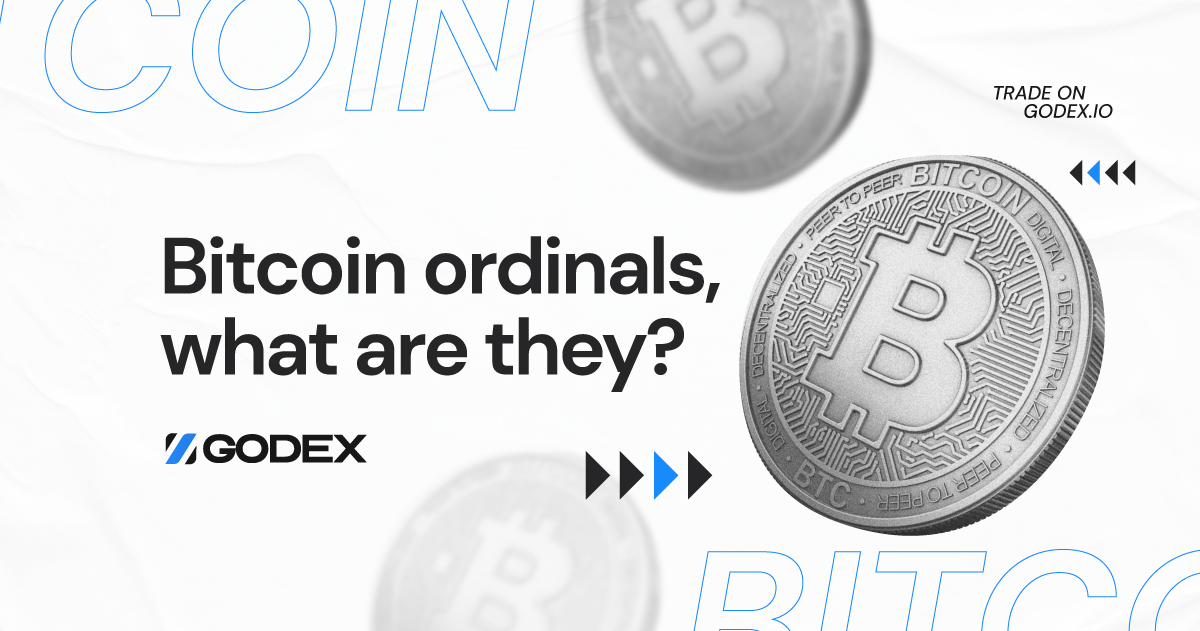Table of Contents
The Ordinals protocol is a novelty in the cryptocurrency industry that can be used to add non-interchangeable tokens directly into the Bitcoin network. While some crypto analysts consider the technology dangerous, blockchain enthusiasts have armed themselves with a tool to create a new kind of NFT. Let’s clarify how it works and whether the Ordinals protocol has a future.
The Structure and Composition of Bitcoin Ordinals
A few years ago, the creators of Counterparty and Stacks protocols tried to place pictures and videos on the Bitcoin blockchain. In these protocols, the developers combined the functionality of smart contracts, tokens, and the BTC blockchain itself. At that time, some venerable crypto community members did not support such activities in the BTC blockchain and actively discouraged them.
The current Ordinals project was developed by Casey Rodarmor, a native of Bitcoin Core, and it represents a numbering system, which allows each satoshi to be assigned an ordinal (ordinal number) by which Bitcoin particles can be tracked during transactions. In addition, the innovation makes individual satoshis unique by adding additional data to them with “inscriptions”. Serial numbers can be linked to, for example, a picture, video, text, etc. So, what are Bitcoin ordinals? Bitcoin NFTs – aka Bitcoin ordinals, aka digital artifacts – are a way to inscribe digital content on the Bitcoin blockchain.
Unlike Counterparty and Stacks, Ordinals allows NFTs to be stored directly on the blockchain, rather than being a reference to an image on a third-party site. Few NFTs hosted on Ethereum have such characteristics. Most of them lead to external web resources. Another difference is that each NFT on Ethereum has its own token, while Bitcoin Ordinals NFTs are linked to individual satoshis. Eric Wall, a former cryptocurrency and blockchain consultant at Nasdaq, estimates that it is seven times cheaper to store jpeg NFTs in BTC than in Ethereum.
Bitcoin Ordinals is based on three technical solutions:
- OP_return. This is a function that adds another output to transactions that is proven to be unspendable.
- Taproot, i.e. a softfork update to the Bitcoin network from 2021. Taproot made the blockchain more private and scalable, enabling more complex smart contracts.
- Ordinals, i.e. the protocol that allows the numbering of satoshis.
Importance of Bitcoin Ordinals in Blockchain Transactions
Grayscale has published a report on Bitcoin Ordinals and their potential impact on the ecosystem. The company’s analysts believe that the implementation of this solution will benefit the market and have a favorable effect in the long run. According to Grayscale, the emergence of Bitcoin Ordinals has two main positive aspects for the ecosystem: an increase in miner commission and community development.
Grayscale analysts also claim that Bitcoin NFTs contribute to the development of the community. The integration of this solution will lead to the emergence of a new layer of developers and authors aimed at stimulating the growth of the ecosystem.
Among many blockchain developers, ordinals have caused a flurry of negative emotions, as the protocol allows for large quantities of memes and NFTs to be placed on the blockchain. Some even suggest launching a filtering system, similar to a spam filter, that would block transactions with “inscriptions.” The Ordinals protocol was perceived ambivalently. Some admirers of the first cryptocurrency believe that it is necessary to preserve the simplicity of Bitcoin at all costs, and the true purpose of the network is solely to store and transfer crypto. Others are convinced that the Bitcoin blockchain should develop and expand its functionality.
Where to buy Bitcoin Ordinals and their Practical Applications in the Cryptocurrency Ecosystem
Just recently, Binance announced the addition of Bitcoin Ordinals support in its proprietary NFT marketplace.
Grayscale believes that the integration of this solution will spur the development of the industry. But at this stage, the popularization of Ordinals has only brought delays and increased commissions.
However, Binance appears to see this direction as promising. With the upcoming integration into Binance NFT, users will be able to buy and trade Bitcoin Ordinals on the trading platform through their Binance accounts without needing a separate wallet that supports overprints.
OKX cryptocurrency exchange is adding new features to its platform. Customers can now trade Bitcoin Ordinals using the OKX wallet.
Here are a few services that you can use to buy, sell, mint, and collect NFT Ordinals and inscriptions on Bitcoin.
- https://ordinalsbot.com/
- https://unisat.io/market
- https://ordinalswallet.com/inscribe
- https://gamma.io/
These are all open Bitcoin Ordinals marketplaces. Here you can easily create your own Bitcoin NFT collections.
Challenges and Limitations of Bitcoin Ordinals
Ordinals NFT Bitcoin system is certainly an interesting protocol, and it has quite deservedly aroused a lot of interest in the cryptocurrency community. But today it is just a curious technological experiment, which can both “shoot up” and get lost among thousands of other Bitcoin protocols that nobody needs.
The mere ability to “mint” NFTs on the Bitcoin blockchain is not enough for Ordinals’ long-term success. Ordinals need a well-developed infrastructure: NFT marketplaces, integration with cryptocurrency exchanges and wallets, monetization mechanisms through royalties, and much more.
All of this is not yet available in the Bitcoin network, and it is not clear whether it will appear because the blockchain of the first cryptocurrency is simply not designed to work with smart contracts capable of realizing the functionality required for this infrastructure.
That is why many experts do not see a future for Ordinals and even consider it harmful for Bitcoin because this protocol will simply overload the network without creating any additional value for the first cryptocurrency. There are massive fears that placing NFT on the Bitcoin blockchain will increase the cost of transactions. Even Bloomberg has already reported that fees on the BTC network have risen to the highest in a year due to the mint of hundreds of NFT Ordinals. At the same time, transactions have become slower. However, supporters of Ordinals do not see anything wrong in that fact believing that this state of affairs will stimulate miners, especially in the future, when the reward for mining a block becomes insignificant, and nodes will mostly earn on commissions.
Considering the polarization of opinions, Bitcoin Ordinals will become a reason for heated discussions in the near future.
FAQ
What is the significance of Bitcoin Ordinals?
Ordinals have only been recently launched, but this protocol is already surrounded by real hype, as it has essentially created opportunities for the development of the NFT market within the largest cryptocurrency network by capitalization. And that chance has already been taken by industry monsters like Bored Ape Yacht Club and CryptoPunks to release their own NFT collections on the Bitcoin blockchain.
As the Bitcoin blockchain continues to grow and evolve, these collections have the potential to become very valuable in the future. The earliest recorded NFTs on the chain, such as Inscription 0, could become highly sought after. Overall the use of NFTs has created a new form of art collection and investment.
An example of Bitcoin Ordinals?
Ordinal Punks is an allusion to one of the most famous and expensive NFT collections, CryptoPunks. The project consists of hundreds of avatars, each with its own blockchain inscription. It is a unique identifier that distinguishes NFT Ordinals from each other in the Bitcoin network.
Taproot Wizards‘ hand-drawn NFT collection consists of two thousand wizards. The project was created by developer Udi Wertheimer in collaboration with Luxor Mining Company and is a reference to a meme from 2013. It features a sloppy digital poster with an image of a wizard and the following inscriptions Bitcoin Wizards, Magic Internet money, and Join us. Also in its title, the authors of the collection refer to the first kind of Bitcoin address (taproot).
Bitcoin Rocks is an NFT collection, inspired by a similar project on the Ethereum network called Ether Rocks, which has 100 images of rocks. Its founder is a Twitter user under the nickname @ordrocks. The first Bitcoin Rocks NFT was recorded in the blockchain under the number 71.
How have ordinals been perceived by the broader Bitcoin ecosystem?
Because of the popularity of the Ordinals project, a fierce debate has erupted in the crypto community. BTC purists who oppose Ordinals argue that any non-financial data in the Bitcoin blockchain is nothing but spam, aimlessly occupying the space of transaction blocks. In turn, Ordinals’ supporters see the project as a trigger for broader demand for the first cryptocurrency’s blockchain, which will stimulate the development of a market for commissions that compensate miners for the costs of keeping the network running. Given that commissions will remain essentially the only revenue stream for miners in the future, it’s in their best interest to welcome any Bitcoin blockchain scenarios that increase their income.
The NFTs created with Ordinals have already increased commission revenue for miners and ensured that blocks are filled with transactions. Activity on the Bitcoin network has risen to its highest level since the spring of 2021, not least because of the new trend.
Start a Cryptocurrency exchange
Try our crypto exchange platform
Disclaimer: Please keep in mind that the content of this article is not financial or investing advice. The information provided is the author’s opinion only and should not be considered as direct recommendations for trading or investment. Any article reader or website visitor should consider multiple viewpoints and become familiar with all local regulations before cryptocurrency investment. We do not make any warranties about reliability and accuracy of this information.
 Alex Tamm
Alex Tamm 
Read more
Ripple (XRP) price has been widely discussed by the cryptocurrency community since it has gained public interest in 2017, even though it was founded by Chris Larsen and Jed McCaleb years before. The platform offers innovative blockchain solutions for the banking sector and has the potential to disrupt the whole finance industry. In recent years, […]
In this article we will talk about Ripple (XRP) and its price prediction. What is Ripple (XRP) Ripple is a San Francisco-based startup that was launched in 2012 by Ripple Labs as a global network both for cross-currency and gross payments. Ripple history began in 2004 with the discussions around the digital coin in the […]
You may well think that an article dedicated to a Tether price prediction or the Tether price in general is a little bit strange — it is a stablecoin after all. However, the price of Tether does fluctuate significantly, although it is nowhere near as volatile as non-stablecoin cryptos. This means that staying up to […]
In the article we share our vision at Zcash cryptocurrency main features and add several price predictions. As cryptocurrencies gain global acceptance and decentralisation slowly enters our lives, privacy becomes the main concern when talking about blockchain adoption. It is no secret that distributed ledger is by far the most secure and transparent technology ever […]
Chiliz coin (CHZ) offers a compelling opportunity for traders interested in the intersection of blockchain technology and sports. By enabling fans to influence team decisions through the Socios app, Chiliz directly monetizes fan engagement and connects with major sports teams like Juventus and Paris Saint-Germain. These partnerships not only enhance the platform’s visibility but also […]
The exponential growth of Bitcoin Satoshi Vision (BSV) against the general bear trend on the cryptocurrency market in autumn 2019 has impressed the community. Due to the increasing market capitalization, the newly emerged altcoin was ranked 5th on CoinMarketCap and managed to maintain its high position at the beginning of 2020. In the article we […]